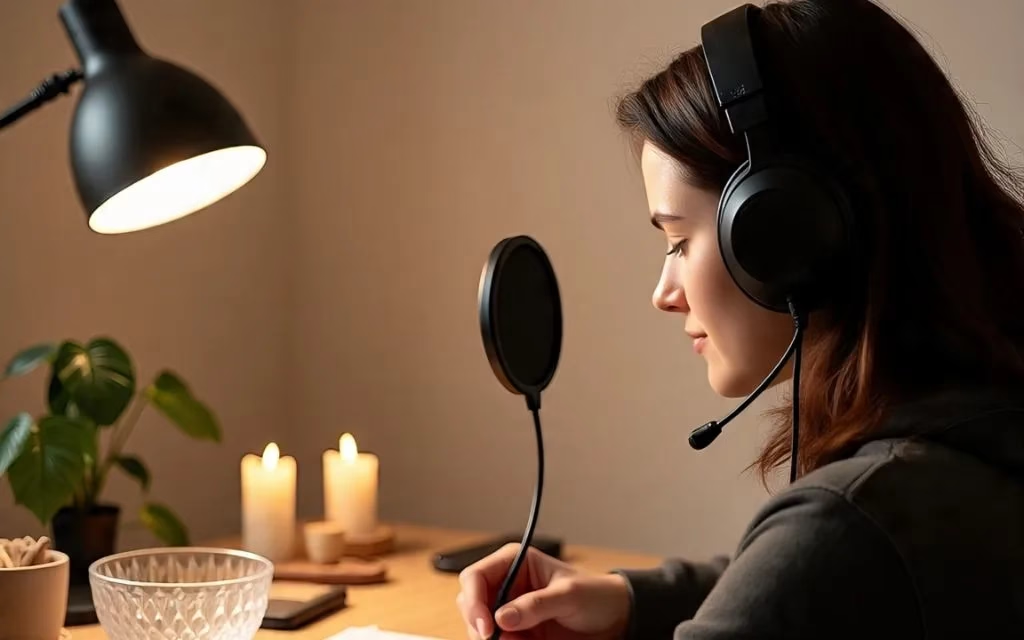The Best Equipment for ASMR Videos: A Complete Guide for Creators
ASMR (Autonomous Sensory Meridian Response) has taken the internet by storm, with millions of viewers tuning in to experience the calming tingles and deep relaxation offered by ASMR videos. Whether you’re whispering into a microphone, tapping on textured surfaces, or creating soothing roleplays, one thing is clear: the quality of your equipment can make or break your content. If you’re planning to start your ASMR channel or level up your current setup, here’s a comprehensive guide to the best equipment for ASMR videos.
Microphones: The Heart of ASMR
Sound quality is everything in ASMR. Your microphone choice is the most important investment.
Binaural Microphones: For an immersive 3D sound experience, binaural mics are the gold standard. The 3Dio Free Space is one of the most popular binaural microphones among professional ASMRtists. It mimics human ears and captures sound as the listener would hear it, providing an ultra-realistic effect.
Condenser Microphones: If you’re just starting, a high-quality condenser mic like the Blue Yeti or Rode NT1-A offers excellent sensitivity and crisp sound for a fraction of the price of binaural setups. These mics are great for whispering, soft speaking, and subtle sound triggers.
Audio Interface: For Superior Sound Processing
If you’re using XLR microphones (like the Rode NT1-A), you’ll need an audio interface. The Focusrite Scarlett 2i2 is a favorite among content creators. It offers clean preamps and easy-to-use controls that help you deliver clear, noise-free audio.
Camera: Capturing Visual Triggers
While sound is crucial, visual quality also plays a huge role in viewer experience. A good camera helps you capture facial expressions, hand movements, and visual triggers in high detail.
DSLR or Mirrorless Cameras: The Canon EOS M50 or Sony ZV-E10 are ideal for ASMR creators. These cameras shoot in 1080p or 4K and have great autofocus, making them perfect for close-up shots and low-light environments.
Webcams for Beginners: If you’re on a budget, a webcam like the Logitech Brio can still produce high-quality video with 4K resolution and adjustable field of view.
Lighting: Soft and Relaxing Ambiance
Lighting sets the tone for your video. ASMR content typically benefits from soft, warm lighting to create a calm and cozy mood.
Ring Lights: A dimmable ring light can provide even, shadow-free lighting. The Neewer 18” Ring Light Kit is an excellent option with adjustable brightness and color temperature.
Softboxes: If you want a more professional setup, a pair of Godox or Fovitec softboxes will help you light the scene gently without harsh shadows or glare.
Pop Filter and Mic Accessories
To minimize plosives and breathing sounds, a pop filter is a simple yet essential addition. A foam windscreen can also help with mic sensitivity and reduce unwanted noise.
Mic Stands and Boom Arms: Adjustable stands, like the Rode PSA1, allow for more flexible positioning, which is especially useful when recording soft tapping or brushing sounds from different angles.
Recording and Editing Software
Post-production is where your ASMR video comes to life. For audio editing, Audacity (free) or Adobe Audition (paid) are both great choices. For video editing, Adobe Premiere Pro, Final Cut Pro, or DaVinci Resolve can help you fine-tune visuals and sync audio for a polished final product.




